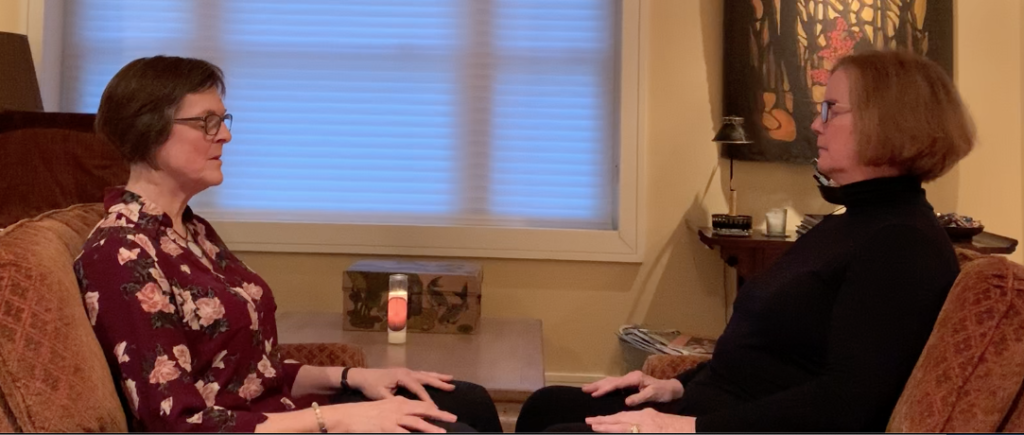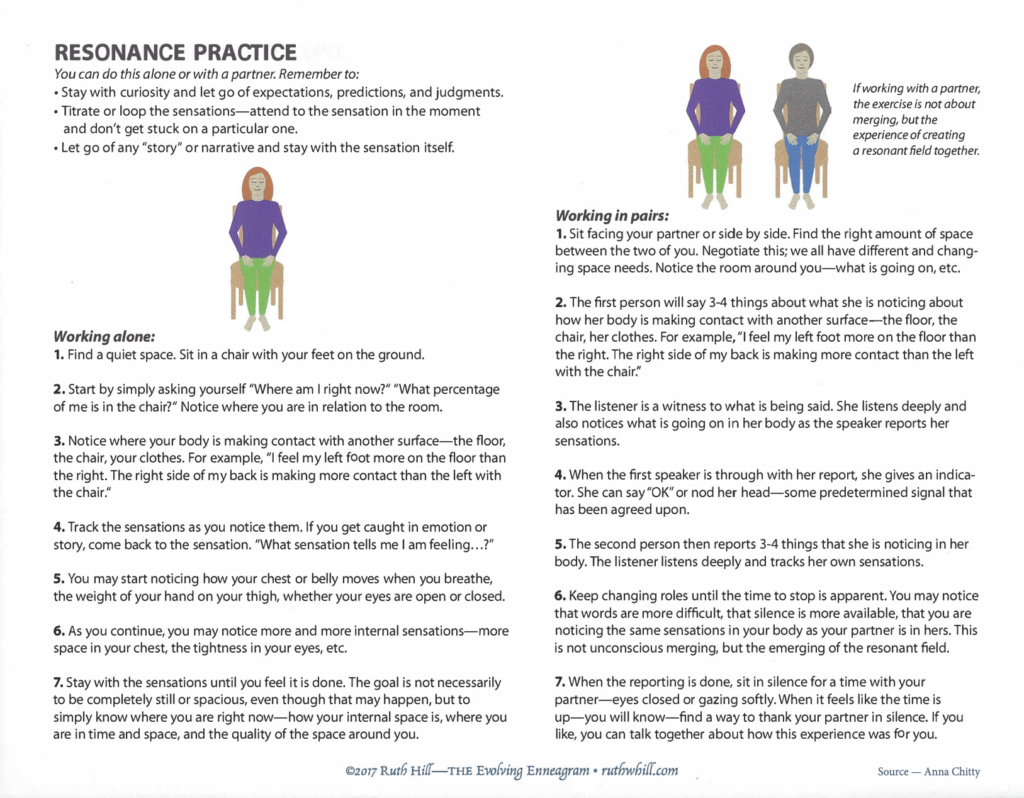
The Resonance Practice is also known as the Presence Exercise. You can do this alone or with a partner. Remember to:
- Stay with curiosity and let go of expectations, predictions, and judgments.
- Titrate or loop the sensations-attend to the sensation in the moment and don’t get stuck on a particular one.
- Let go of any “story” or narrative and stay with the sensation itself.
Working alone:
- Find a quiet space. Sit in a chair with your feet on the ground.
- Start by simply asking yourself “Where am I right now?” “What percentage of me is in the chair?” Notice where you are in relation to the room.
- Notice where your body is making contact with another surface-the floor, the chair, your clothes. For example, “I feel my left foot more on the floor than the right. The right side of my back is making more contact than the left with the chair.”
- Track the sensations as you notice them. If you get caught in emotion or story, come back to the sensation. “What sensation tells me I am feeling… ?”
- You may start noticing how your chest or belly moves when you breathe, the weight of your hand on your thigh, whether your eyes are open or closed.
- As you continue, you may notice more and more internal sensations-more space in your chest, the tightness in your eyes, etc.
- Stay with the sensations until you feel it is done. The goal is not necessarily to be completely still or spacious, even though that may happen, but to simply know where you are right now-how your internal space is, where you are in time and space, and the quality of the space around you.
Working in pairs:
- Sit facing your partner or side by side. Find the right amount of space between the two of you. Negotiate this; we all have different and chang ing space needs. Notice the room around you-what is going on, etc.
- The first person will say 3-4 things about what she is noticing about how her body is making contact with another surface-the floor, the chair, her clothes. For example, “I feel my left foot more on the floor than the right. The right side of my back is making more contact than the left with the chair:’
- The listener is a witness to what is being said. She listens deeply and also notices what is going on in her body as the speaker reports her sensations.
- When the first speaker is through with her report, she gives an indica tor. She can say “OK” or nod her head-some predetermined signal that has been agreed upon.
- The second person then reports 3-4 things that she is noticing in her body. The listener listens deeply and tracks her own sensations.
- Keep changing roles until the time to stop is apparent. You may notice that words are more difficult, that silence is more available, that you are noticing the same sensations in your body as your partner is in hers. This is not unconscious merging, but the emerging of the resonant field.
- When the reporting is done, sit in silence for a time with your partner-eyes closed or gazing softly. When it feels like the time is up-you will know-find a way to thank your partner in silence. If you like, you can talk together about how this experience was for you.

